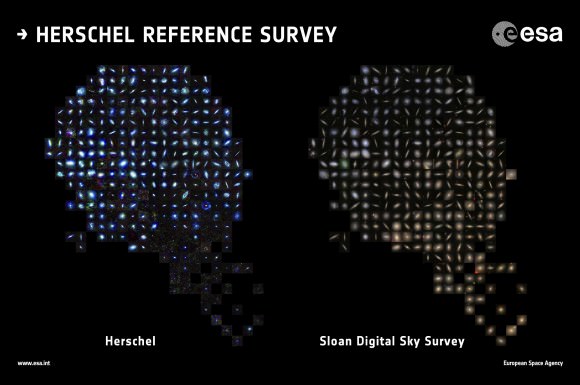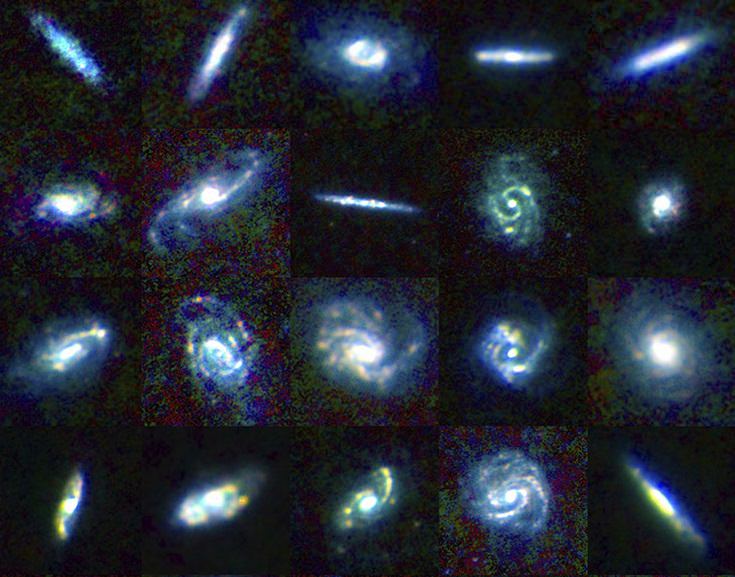While dust is easy to ignore in small quantities (says the writer looking at her desk), across vast reaches of space this substance plays an important role. Stick enough grains together, the theory goes, and you’ll start to form rocks and eventually planets. On a galaxy-size scale, dust may even effect how the galaxy evolves.
A new survey of 323 galaxies reveals that dust is not only affected by the kinds of stars in the vicinity, but also what the galaxy is made of.
“These dust grains are believed to be fundamental ingredients for the formation of stars and planets, but until now very little was known about their abundance and physical properties in galaxies other than our own Milky Way,” stated lead author Luca Cortese, who is from the Swinburne University of Technology in Melbourne, Australia.
“The properties of grains vary from one galaxy to another – more than we originally expected,” he added. “As dust is heated by starlight, we knew that the frequencies at which grains emit should be related to a galaxy’s star formation activity. However, our results show that galaxies’ chemical history plays an equally important role.”

Data was captured with two cameras on the just-retired Herschel space telescope: Spectral and Photometric Imaging Receiver (SPIRE) and Photodetecting Array Camera and Spectrometer (PACS). These instruments examined different frequencies of dust emission, which shows what the grains are made of. You can see a few of those galaxies in the image above.
“The dust-rich galaxies are typically spiral or irregular, whereas the dust-poor ones are usually elliptical,” the European Space Agency stated. “Dust is gently heated across a range of temperatures by the combined light of all of the stars in each galaxy, with the warmest dust being concentrated in regions where stars are being born.”
Astronomers initially expected that a galaxy with speedy star formation would display more massive and warmer stars in it, corresponding to warmer dust in the galaxy emitting light in short wavelengths.
“However, the data show greater variations than expected from one galaxy to another based on their star formation rates alone, implying that other properties, such as its chemical enrichment, also play an important role,” ESA said.
You can read more about the research in the Monthly Notices of the Royal Astronomical Society or in preprint version on Arxiv.
Sources: Royal Astronomical Society and European Space Agency

